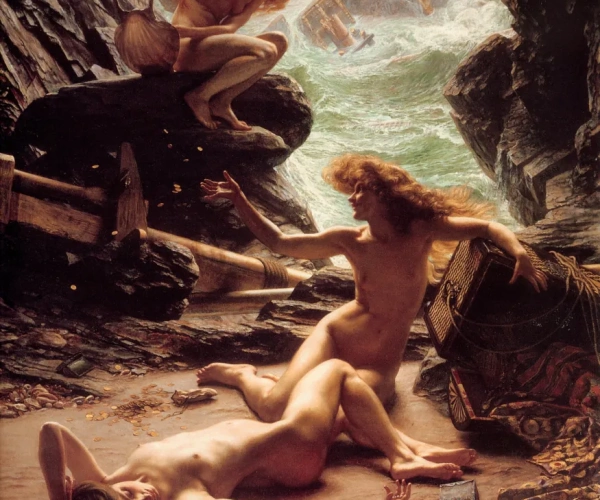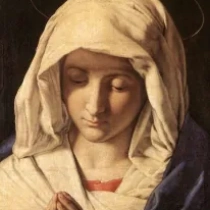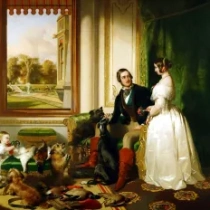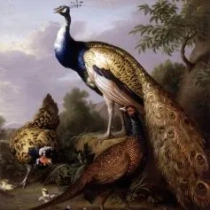Cave of the Storm Nymphs 1903
Sir Edward John Poynter's "Cave of the Storm Nymphs," painted in 1903, is a testament to the artist's mastery of the neoclassical style and his ability to create captivating and compelling narratives within his art. The painting depicts a supernatural, mystical scene of three nymphs entwined in a dramatic tussle with the elements, surrounded by turbulent waves and billowing clouds. Poynter's impeccable attention to detail and his skillful use of light and color draw the viewer into the tumultuous world of the storm nymphs, creating a sense of both awe and unease.
The composition is striking, with the central figures of the nymphs dominating the canvas, their graceful yet powerful forms capturing the viewer's attention. The interplay of light and shadow adds depth and dynamism to the scene, as the nymphs' flowing drapery and windswept hair seem to come alive in the tempestuous atmosphere. Poynter's meticulous rendering of the natural elements, such as water and clouds, further enhances the dramatic impact of the painting, evoking a sense of both danger and beauty.
Throughout his career, Poynter was celebrated for his ability to infuse his works with a sense of myth and fantasy, and "Cave of the Storm Nymphs" is no exception. The painting encapsulates the romanticism and theatricality of the neoclassical tradition, as well as Poynter's own fascination with ancient mythology and storytelling. The artist's command of narrative and symbolism is evident in the way he imbues the scene with a sense of mystery and tension, inviting viewers to contemplate the interplay between human, natural, and supernatural forces.
In "Cave of the Storm Nymphs," Poynter demonstrates not only his technical prowess as a painter but also his ability to transport the viewer to a realm of otherworldly drama and enchantment. The painting stands as a testament to Poynter's enduring legacy as a master of the neoclassical style and a storyteller of the highest order.







No Comments Yet...